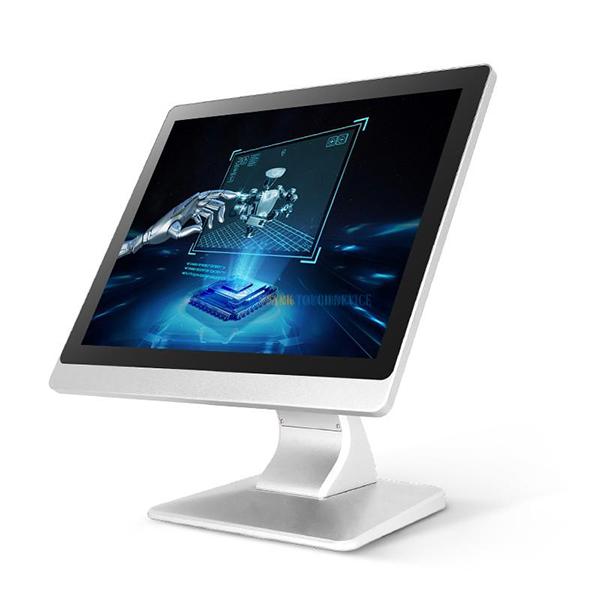Welcome STARK TOUCH DEVICE!
Solutions
Calibration and maintenance of temperature sensors for industrial control computers
Temperature Sensor Calibration and Maintenance for Industrial Control Computers
Industrial control computers (ICCs) rely on precise temperature sensors to monitor environmental conditions, prevent overheating, and ensure optimal performance. Over time, these sensors may drift from their calibrated settings, leading to inaccurate readings and potential system failures. This guide provides actionable steps for calibrating and maintaining temperature sensors in ICCs.

Understanding Temperature Sensor Types in Industrial Control Systems
Different ICCs use varied temperature sensor technologies, each with unique calibration requirements.
Thermocouples
Thermocouples generate voltage based on temperature differences between two junctions. Common in industrial settings, they require careful handling due to their sensitivity to mechanical stress and environmental factors.
Common Issues
Voltage drift caused by oxidation or contamination at the junctions.
Physical damage from vibrations or thermal cycling.
Incorrect wiring leading to reversed polarity or signal loss.
Resistance Temperature Detectors (RTDs)
RTDs measure temperature by tracking changes in electrical resistance. Known for their stability, they still demand periodic calibration to maintain accuracy.
Common Issues
Lead wire resistance introducing measurement errors.
Corrosion on the sensing element affecting resistance values.
Mechanical strain altering the RTD’s physical structure.
Thermistors
Thermistors, either negative temperature coefficient (NTC) or positive temperature coefficient (PTC), change resistance with temperature. They’re often used in compact ICCs but can degrade faster than other sensors.
Common Issues
Aging effects reducing sensitivity over time.
Moisture ingress causing electrical shorts or drift.
Self-heating errors during low-power measurements.
Step-by-Step Calibration Process
Calibrating temperature sensors ensures ICCs receive accurate data for thermal management.
Pre-Calibration Preparation
Before starting, gather necessary tools and create a controlled environment:
Gather Calibration Equipment
A precision reference thermometer with traceable calibration.
A stable heat source, such as a dry block calibrator or temperature-controlled bath.
Insulated gloves and safety goggles to handle hot surfaces.
Isolate the Sensor
Disconnect the sensor from the ICC’s circuitry to avoid electrical interference.
Label wires or connectors to ensure proper reconnection.
Clean the sensor surface to remove dust, grease, or contaminants.
Performing the Calibration
Follow these steps to adjust sensor readings accurately:
Stabilize the Temperature
Place the sensor and reference thermometer in the heat source.
Allow both to reach thermal equilibrium at the first calibration point (e.g., 25°C).
Wait for at least 10 minutes to ensure stable readings.
Compare Readings
Record the sensor’s output (voltage, resistance, or digital value) and the reference thermometer’s reading.
Repeat at multiple points (e.g., 0°C, 50°C, 100°C) to create a calibration curve.
Note any discrepancies exceeding the sensor’s specified tolerance.
Adjust Calibration Settings
For analog sensors, use a potentiometer or trimmer to adjust the output.
For digital sensors, access the ICC’s configuration software to update calibration coefficients.
Document all adjustments, including dates, temperatures, and new settings.
Post-Calibration Verification
After calibration, confirm the sensor’s accuracy:
Conduct a Blind Test
Hide the reference thermometer’s display and ask a colleague to read it.
Compare the hidden value with the sensor’s output to assess real-world performance.
Log Results
Create a calibration certificate detailing the test points, tolerances, and adjustments.
Store the certificate with the ICC’s maintenance records for future reference.
Common Challenges and Solutions
Calibration can encounter obstacles, but these strategies help overcome them.
Sensor Drift Over Time
Even well-maintained sensors drift due to environmental stress or component aging.
Mitigation Strategies
Schedule frequent calibrations (e.g., annually or biannually) for critical applications.
Implement a “calibration due” alert system in the ICC’s software.
Use sensors with built-in self-calibration features if available.
Environmental Interference
Industrial settings expose sensors to EMI, humidity, and chemical vapors.
Mitigation Strategies
Shield sensor wiring with conductive tape or braided sleeves.
Install sensors in protective enclosures rated for the environment.
Avoid placing sensors near heat sources or cooling vents.
Human Error During Calibration
Incorrect procedures or misinterpreted readings can compromise accuracy.
Mitigation Strategies
Train technicians on proper calibration techniques and safety protocols.
Use checklists to ensure each step is followed systematically.
Perform calibrations in pairs to cross-verify readings.
Best Practices for Ongoing Sensor Maintenance
Regular maintenance extends sensor lifespan and reduces calibration frequency.
Routine Inspections
Schedule monthly checks to identify issues early:
Visual Inspection
Look for cracks, discoloration, or corrosion on the sensor body.
Check for loose connections or frayed wires.
Verify that mounting brackets are secure and undamaged.
Functional Testing
Use a handheld meter to measure the sensor’s output at ambient temperature.
Compare readings to expected values based on room conditions.
Flag any deviations exceeding 5% for further investigation.
Cleaning and Handling
Proper care prevents premature sensor failure:
Gentle Cleaning
Wipe sensor surfaces with a soft, lint-free cloth dampened with isopropyl alcohol.
Avoid abrasive materials or solvents that could damage coatings.
For threaded sensors, use a brush to remove debris from grooves.
Safe Handling
Wear gloves when touching sensors to prevent oil transfer from skin.
Avoid bending or twisting sensor leads during installation or removal.
Store spare sensors in their original packaging to protect against dust and moisture.
Documentation and Traceability
Maintain detailed records to support troubleshooting and compliance:
Calibration Logs
Record each calibration’s date, technician, equipment used, and test results.
Include before-and-after readings to demonstrate improvement.
Store logs electronically and in hard copy for redundancy.
Change Management
Document any modifications to sensor types, locations, or calibration methods.
Review logs during incident investigations to identify patterns.
By following these structured approaches, technicians can ensure temperature sensors in industrial control computers provide reliable data, safeguarding against overheating and system failures.


